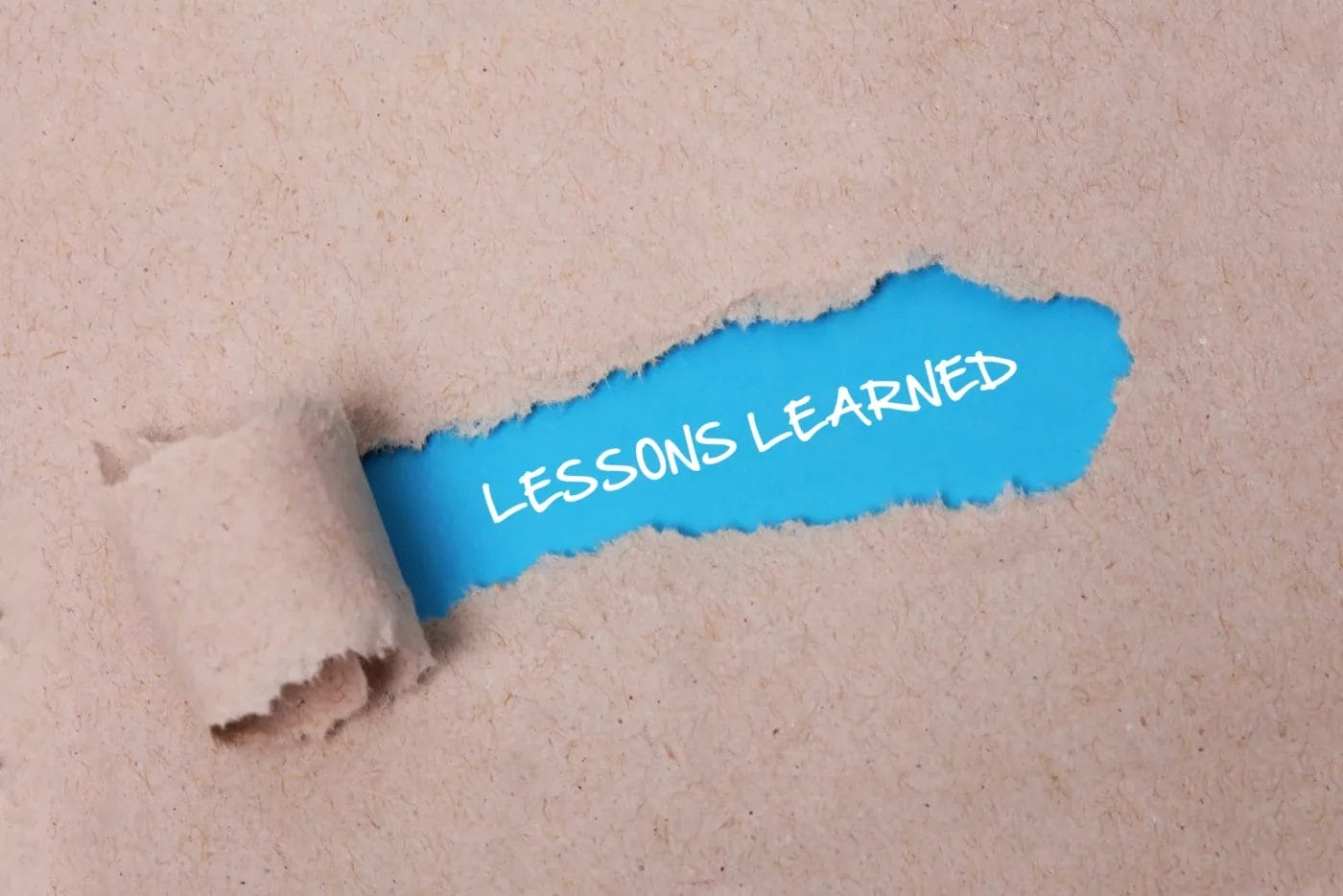Home > Blog > Valuable Lessons from Product Failures
Valuable Lessons from Product Failures

Bill Gates has said, “It’s fine to celebrate success, but it’s more important to heed the lessons of failure.” He’s also been quoted as saying, “Your most unhappy customers are your greatest source of learning.”
Gates, you’ve probably heard, managed to launch a few successful products in his day. And if you’ve ever tried unsuccessfully to make a simple formatting change in a Word doc, or had PowerPoint freeze up and force you to close the app — without saving your work — then you know Gates has also faced his share of unhappy customers.
And because Microsoft has been on both ends of the product-performance spectrum many times — creating industry-dominating products (Windows, Office, Xbox) and suffering high-profile product failures (Windows Vista, Microsoft Zune, the Windows Phone) — we believe it’s worth every product professional’s time to delve more deeply into Gates’s suggestion to search for lessons in product failure.
So in this post, we’re going to explore what you can learn from other companies’ product failures — to help you avoid experiencing them with your own team’s products.
We’ll review some of the most common reasons products fail, suggest some best practices to avoid those pitfalls, and discuss a few real-world examples of how product teams failed and how others turned their product failures into successes.
Common Causes of Product Failure

1. The team fails to draw the right conclusions from their research.
The ability to intelligently conduct research and analyze the results are among the most important skills for any Product Manager. Unfortunately, though, many product teams either focus on the wrong data or draw inaccurate conclusions from their analysis of those data.
For example, marketing author and Squidoo founder, Seth Godin, tells a funny story about his failure with a record label he founded called Sauce. Godin’s unique idea was to create lots of new music and market it exclusively to audiophiles who owned high-end stereo equipment.
Godin had done his research on starting a record label and learned a great deal about his buyer persona’s need for ever-better sound. He also learned how to produce music that would appeal to the audiophile’s discerning ear. But as he later admitted, Godin missed one key trait of his buyer persona that all but ensured his plan was destined to fail. As he explained in his TED Talk: How to get your ideas to spread, “People with $20,000 stereos don’t like new music.”
2. The product is too early for the market.
In some cases, a company or product team can be so innovative that their vision — although ingenious — is simply too far ahead of its time to find a viable market. Case in point: Sega Channel.
Sega Channel was the first online, subscription-based gaming platform, and it launched in 1994. We use the term “online” loosely — this was 1994, after all. The service actually allowed users to connect their Sega Genesis video game console to their TV and have games delivered on-demand through their cable company’s connection.
But technology just wasn’t sophisticated enough in the mid-1990s to support this brilliant idea of bringing video games into people’s homes digitally. Cable bandwidth was only a small fraction of what it is today. Local cable providers also needed to set up new equipment and train support reps to help customers through the setup process. Within a few years, other gaming providers caught on, cable companies were making major infrastructure investments to support this type of service, and Sega Channel no longer enjoyed a competitive advantage.
3. The company fails to recognize they’re in a paradigm shift.
Even a successful product can fail — sometimes suddenly — not because of anything wrong with the product itself but because the ground is shifting underneath its market, and the product team simply doesn’t foresee the threat until it’s too late.
Netflix founder, Reed Hastings, actually proposed a partnership with Blockbuster in 2000, offering to serve as the online delivery division for the DVD-rental giant. At the time, Blockbuster was the dominant player in the movie-rental industry, and the executive team didn’t see any reason to change course.
But as we now all know, the entire entertainment industry was changing — moving from physical media to digital media, and from in-store rentals to rent-by-mail and eventually in-home streaming. The irony of these product failures is that they often happen to highly successful solutions (satellite radio, digital cameras, etc.) because the teams behind them are too focused on their current successes to objectively monitor the competitive landscape for potential threats.
What learnings can we take away from high-profile product failures like the examples above? There are many lessons from these stories, but here are a few best practices for avoiding failure that we believe are the most likely to help your product team.
- Research your market and target persona thoroughly — and continually, not simply upfront before you begin building your product.
- Welcome user feedback and pay attention to it. As Bill Gates noted, your unhappy customers are a great source of useful information to help you improve your products.
- Stay on the lookout for changing trends, user needs, new competitors, new technologies — anything that suggests your product is due for an update or even a full-blown pivot.
- Prioritize ruthlessly, and create an intuitive experience that includes only high-value functionality. Google became the dominant search company — while Yahoo! remains an also-ran — in part because Google prioritized only a few valuable features while Yahoo! tried to deliver everything to everyone on its cluttered homepage.
More Lessons Learned from Failed Products

Now let’s discuss a few more examples of digital products that failed, how and why each one stumbled, and the lessons we can take from their missteps.
1. Quibi
Quibi was a short-form video platform designed for people to view on the go, using their cell phones. (Think Tik Tok or YouTube Shorts. Except for the failure part.)
The service launched in 2020 led by big names in tech and entertainment — including eBay’s former CEO, Meg Whitman, and Dreamworks co-founder, Jeffrey Katzenberg. That top talent helped the company raise billions in funding. All factors suggesting Quibi would be a hit.
But it wasn’t. In fact, the service shut down in less than a year.
Lesson: Businesses need to be agile and responsive to user needs and behaviors.
Critics cite plenty of causes of Quibi’s death, but most people who followed the company’s rise and fall agree on at least one major problem with the business: Failure to adapt to new realities.
Quibi was designed for people on the go, but it launched just as the world was locking down due to COVID-19. Even with billions of people staying home and spending more time on their TVs and computer monitors, Quibi’s executive team was very slow to support larger-screen viewing with apps for computers and set-top boxes like Google Chromecast or Roku.
2. Microsoft’s Windows Vista
The Windows Vista operating system was designed as an upgrade and replacement for Windows XP. It was also supposed to represent a major shift and modernization to Microsoft’s business model — moving away from CD-ROM-based software products to cloud-based subscriptions. That was a smart move.
But there were huge challenges with the Vista product, challenges that every software product team — and particularly an industry giant like Microsoft — should have foreseen.
The biggest problems with Vista were its lack of compatibility with existing software applications (a ZDNet article at the time said simply that Vista “broke too much stuff”) and that the system’s bloated code base had the effect of making it very slow and frustrating for users.
Lesson: Test extensively before launch.
As the ZDNet article noted, Microsoft could have avoided these problems — and the terrible publicity they created for Vista, which ultimately led to its downfall — if the company had tested the software extensively before launching it.
Subjecting your digital products to as many types of stress tests as you can think of — to gauge performance, speed, bugs, compatibility with other apps and hardware devices, etc. — should be a nonnegotiable part of your team’s product development process.
3. Internet Explorer 6
Microsoft’s Internet Explorer 6 had many performance problems, but what ultimately led to the web browser’s death was the fact that it had many known security vulnerabilities.
Users voiced many complaints about IE6 almost immediately after it launched (see lesson #2 above). And because the browser performed so poorly in its early days, Microsoft reportedly made the decision that IE6 was going to be a money-loser and not to continue supporting it.
That decision led to many security problems, problems that made the browser a serious risk to individuals’ and businesses’ sensitive or proprietary data. And because Microsoft refused to commit ongoing development resources to updating IE6, it became increasingly incompatible with evolving web standards, such as HTML 4.0 and XHTML.
Lesson: Prioritize security and compliance for your digital products, or risk losing trust.
If your digital product is live and has known vulnerabilities that could jeopardize your users’ data, you need to prioritize correcting those issues immediately. The fallout — both for your customers and your company’s reputation — is too great a risk not to. Microsoft should have known better than to keep a non-secure web browser on the market for years after discovering its weaknesses to hacking. But your team can learn from their mistakes.
Bonus Tip: Reduce Product Failures by Centralizing Product Data
As you might have noticed throughout this post, a key to reducing your likelihood of product failures is to compile, share, and frequently review and analyze a wide range of product data. That content includes:
- Detailed bios and descriptions of your user and buyer personas.
- The results of your prioritization exercises to determine which backlog items to build and your strategic reasoning for each decision.
- Customer and stakeholder feedback, suggestions, requests and complaints.
- A regularly updated product roadmap that reflects your team’s product strategy and plans.
- OKRs and other success metrics, ideally connected to each item on your product roadmap.
The best way to ensure all of this mission-critical data remains up-to-date and easy to review and share with stakeholders is to centralize it in an end-to-end product management software platform, like craft.io.



